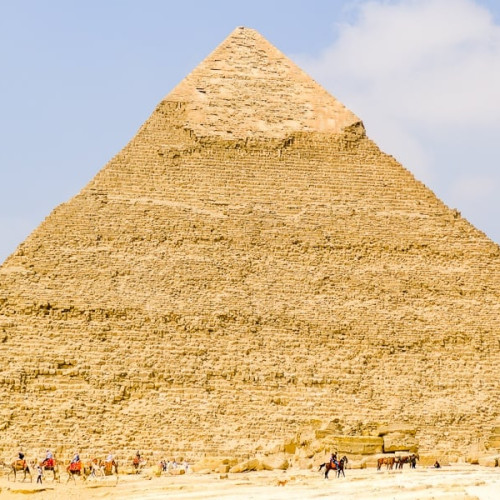
A Comprehensive Guide to Monuments in the USA
# A Comprehensive Guide to Monuments in the USA. ## Introduction. The United States is a nation rich in history and culture, reflected through its myriad monuments. These structures not only commemorate significant events and people but also serve as focal points for tourism and education. From towering statues to vast historical sites, the monuments across the country tell the stories of freedom, democracy, sacrifice, and exploration. In this article, we explore some of the most iconic monuments in the USA, highlighting their significance and the unique experiences they offer to visitors. ## The Lincoln Memorial: A Testament to Leadership. Located in Washington, D.C., the Lincoln Memorial is perhaps one of the most recognized monuments in the United States. Dedicated to President Abraham Lincoln, this iconic structure is known for its impressive marble statue of Lincoln seated and overlooking the Reflecting Pool. Designed by architect Henry Bacon, the memorial is modeled after a Greek Doric temple, symbolizing the principles of democracy and unity. The monument is not only significant for its architectural beauty but is also a site of historical importance. It was here that Martin Luther King Jr. delivered his famous "I Have a Dream" speech in 1963, rallying for civil rights and equality. Today, the Lincoln Memorial stands as a powerful reminder of Lincoln's legacy and the ongoing struggle for civil rights in America, attracting millions of visitors each year. ## Mount Rushmore: The Carved Faces of History. Located in South Dakota, Mount Rushmore is a monumental granite sculpture featuring the faces of four U.S. presidents: George Washington, Thomas Jefferson, Theodore Roosevelt, and Abraham Lincoln. Completed in 1941, this massive artwork, created by sculptor Gutzon Borglum, was designed to promote tourism in the Black Hills region and celebrate the nation’s founding principles and expansion. The sheer scale of Mount Rushmore is awe-inspiring, with each face measuring about 60 feet tall. Visitors can explore the surrounding park, which offers hiking trails, educational exhibits, and stunning viewpoints. The monument has become a symbol of American patriotism and is often featured in popular culture, making it a must-visit destination for travelers eager to connect with their nation's history. ## The Statue of Liberty: A Beacon of Hope. The Statue of Liberty, located on Liberty Island in New York Harbor, is a universal symbol of freedom and democracy. Gifted by France to the United States in 1886, the statue was designed by sculptor Frédéric Auguste Bartholdi and stands at 305 feet tall from the base to the tip of the torch. It represents the spirit of liberty, welcoming immigrants arriving on American shores and affirming the values of opportunity and hope. Visitors to the Statue of Liberty can take a ferry from Manhattan, explore the island, and visit the accompanying museum. Climbing to the crown offers a panoramic view of New York City, making it an unforgettable experience. The monument’s historical and cultural significance embodies the ideals of the United States, reminding all who gaze upon it of the nation’s commitment to freedom and human rights. ## The Washington Monument: A Tribute to the Founder. Another emblematic structure in Washington, D.C., the Washington Monument honors George Washington, the first president of the United States. Completed in 1884, the monument stands at an impressive 555 feet, making it the tallest stone structure in the world at the time of its completion. Constructed from marble, granite, and blue stone, the monument features a distinct two-tone appearance due to the scarcity of materials during construction. Visitors can ascend the monument via an elevator to enjoy spectacular views of the capital. Engaging in the rich history surrounding the Washington Monument, visitors can learn about the challenges of its construction and the immense respect Washington garnered as a leader. The monument serves as a centerpiece of the National Mall and is surrounded by various memorials and museums, making it an integral part of any visit to the nation’s capital. ## The Vietnam Veterans Memorial: Remembering Sacrifice. The Vietnam Veterans Memorial, located in Washington, D.C., is a poignant tribute to the men and women who served in the Vietnam War. Designed by Maya Lin and dedicated in 1982, it includes a reflecting wall etched with the names of over 58,000 servicemen and women who lost their lives during the conflict. The stark, black granite wall creates a striking contrast against the greenery of the nearby National Mall, allowing visitors to reflect on the cost of war and sacrifice. The memorial invites visitors to leave personal mementoes, creating an emotional connection to the souls remembered here. The site serves not only as a place of remembrance but also as a healing space for veterans and their families. As one of the most visited monuments in the U.S., the Vietnam Veterans Memorial stands as a testament to the importance of acknowledging history, grief, and resilience. ## Conclusion. Monuments serve as markers of our collective history and cultural identity, offering insight into the values, struggles, and triumphs of the United States. From the grandeur of the Lincoln Memorial to the reflective silence of the Vietnam Veterans Memorial, these structures encapsulate the stories of lives lived and lessons learned. By visiting these monuments, travelers can forge a deeper connection with America’s past and gain a greater appreciation for the present. As you embark on your journey to explore the United States, make sure to include these remarkable landmarks in your itinerary, ensuring that the legacy of our history continues to inspire future generations. .








